Pat Flynn has a new course, on how to start a successful YouTube channel in 2022.
Grab the course HERE (Save $ - use the coupon JAMES )
In this, Pat’s third appearance on James’s show, he shares tested tips for achieving impact, traction and financial wins on the world’s largest video website.
Podcast: Download (Duration: 41:43 — 41.9MB)
Get Notified Of Future Episodes Apple Podcasts | Spotify | Amazon Music | Android | Blubrry | Gaana | TuneIn | Deezer | Anghami | RSS | More
Wondering how to start a successful YouTube channel in 2022? Pat Flynn, whose subscribers number in the hundreds of thousands, offers answers, in his brand new course.
Pat credits his recent success on YouTube to, first of all, knowing who your material is for.
He also recommends a market map, outlining three important P’s, that will set you up to succeed on the platform.
And Pat stresses the importance of giving YouTube what it wants, in order to get you the reach you’re after.
Table of contents
1. A bit of backstory on Pat
2. How your audience impacts your approach
3. Your market map and the 3Ps
4. Connect better with your audience
5. Getting past the hiccups
6. Finding your position
7. Should shorts be separate?
8. Do you need a million subscribers?
9. Keeping people watching
-
a. Get to the value quickly
b. Tell stories
c. Video editing
d. Title first
10. The numbers you want to look at
-
a. Clickthrough rate
b. Watch time
-
a. When you get a hit
b. Comments
12. Put effort into your text
13. What mixing up location can do
A bit of backstory on Pat
In his career online, Pat Flynn has been a highly successful blogger and affiliate marketer, teaching people how to make affiliate sales, and how to podcast.
Pat has several popular books to his name, and has built two YouTube channels with hundreds of thousands of subscribers. This latter endeavor has prompted him to produce a course on how to start a successful youtube channel in 2022.
It’s this topic that interests James in today’s interview. He and Pat will be going over some of Pat’s best tips for YouTube, among them a market map composed of three P’s:
– Places
– People
– Products
It’s a timely discussion aspiring and existing YouTubers should benefit from.
How your audience impacts your approach
Now before you even start a YouTube channel, says Pat, you have to know who it is that you’re going to be creating videos for – this will dictate your approach. The good news is that whether you set up as a business or as a person, both can work depending on your audience.
Before Pat started his Pokemon-themed Deep Pocket Monster channel, he spent a good three or four months diving into the space as a consumer of other people’s YouTube videos, understanding who the players in the space were and what unique talents they had. This is something he actually teaches in his book, Will It Fly?
Your market map and the 3Ps
Pat figured out there was opportunity in the space, that he enjoyed it, and that he wanted to add value to the community. So to know first who else was in the crowd, he created a market map.
The market map is a spreadsheet with three columns, containing three lists:
1. Places – Where does your target audience exist? Pat listed the YouTube channels, the podcasts, the online and offline conferences, and the forums where the Pokemon community hung out.
2. People – Who in the space have earned the trust of that audience, and why do people go to them? Pat figured out from that who was doing what, and where it wouldn’t do for him to compete.
3. Products – What are people buying? This is especially helpful if you have plans to run a related business – you’ll see what people are paying for, what they’re being offered, and what kind of language is being used.
With the market map, Pat identified the opportunity in the YouTube Pokemon space to tell better stories, and he also realized he had superpowers in cinematography and the like that he could bank on. So he brought those elements into his new channel.
Connect better with your audience
Pat noticed a lot of people on YouTube saying, Hey, you guys, or, Hey everybody, welcome back to the channel. He wanted to appeal to the individual, and so he would say, You – it was being different and intimate.
This achieved several things: one, a lot of people followed him; two, YouTube started displaying his videos to other people; and three, community members who’d been in the space longer reached out to him to collaborate – he was not a competitor, but someone who complemented what other people were doing.
Getting past the hiccups
On whether, again, you start a channel as a business or a person, it’s up to you what you’re comfortable with. Forcing something not in your nature can be difficult, and when you’re starting out on YouTube, you want to try to make it as easy as possible.
With the Pat Flynn channel, says Pat, he had a lot of hiccups: he doubted his ability to make video, and didn’t want his face on camera, so for a long time he did a lot of tutorials using screen capture. He cringed at the sound of his own voice.
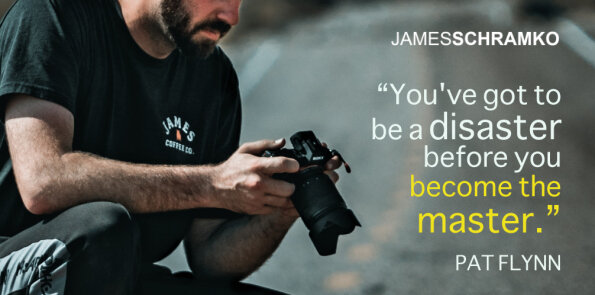
YouTube differs from podcasts in that it’s like fishing – you can have zero subscribers, and with your next video get millions of views. A lot of people cast once and give up, but if you keep casting, the next one might just be the lunker.
Finding your position
The big insight, says James, is you need research if you aim to go on YouTube. And the three P’s allow for the next P, which is finding your position in the market.
That’s right, says Pat.
The Pat Flynn channel started in 2009, and it was a slow start – nine and a half years to reach 100,000 subscribers. But just a year after that, they hit 200,000, and less than a year later 300K.
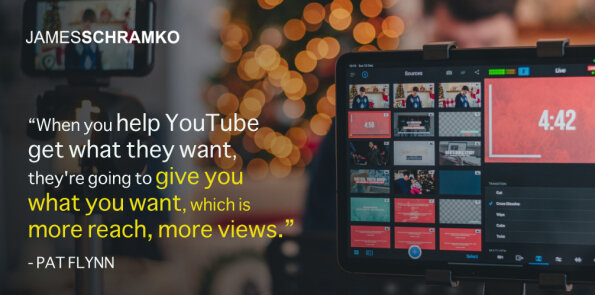
More views means more authority, more clients, more students, and of course, ad revenue. Last May, Pat’s Pokemon channel made $23,000, from ad revenue alone.
Should shorts be separate?
James gets asked almost weekly: can you put shorts on your long-form content channel or should they be separate?
It’s a huge debate on YouTube, says Pat, on which he and many other people have their opinion. On some channels, long and short form co-exist quite successfully; on his channel, shorts sabotaged the growth of his other material.
Pat considers the world of IG reels, TikTok and YouTube shorts a kind of general public mass approach to content. But if you’re wanting to grow a hardcore fan base for something particular, he thinks the more niche you are, the better.
And to succeed there, your best bet are longer-form videos, meaning three to 12 minutes or longer, the sweet spot though being eight to 12.
Do you need a million subscribers?
At eight minutes, you can include a mid-roll, if you’re qualified for monetization, which happens after 1000 subscribers. That’s the big goal for many beginners, and the one Pat pushes in his course, YouTube From Scratch.
Just a thousand, says Pat. You don’t need a million, you don’t need 20 million, although there are channels blowing up in the tens of millions.
Keeping people watching
Something Pat has adopted from YouTube sensation MrBeast is to avoid welcoming people back to his channel. That’s for people who have already found you, and Pat wants more people to find him, not to disengage them at the first sentence.
Also, with MrBeast videos, you’ll notice that within the first few seconds you’re in the challenge the title mentions. Pat does the same – he doesn’t waste time getting to whatever’s in the title and thumbnail, because the sooner he gets into it, the longer people stick around.
And the longer people watch your video, the more likely YouTube will send it to more people. YouTube ultimately wants more ad revenue, and they get it by keeping people on the platform, the click-and-stick strategy.
There are various ways you can keep people watching your video till the end:
Get to the value quickly
As mentioned, like MrBeast, Pat rejects fluffy intros and goes straight into what’s important.
Tell stories
People are simply interested in stories. Stories give context to a discussion and make things relatable.
Video editing
Quick zoom-ins, slow panning, B-roll, text on the screen – these can keep people interested in your video better than, say, a talking head. Though with really good story, a talking head can work, too.
Title first
Used to be, Pat would film around an idea, then force a title onto it – when he reversed that, came up with a compelling title and then filmed based on that, it was a game-changer.
The numbers you want to look at
Analytics are important, says Pat, but you need only keep tabs on a couple of stats.
Clickthrough rate
First and foremost is clickthrough rate. Within 30 minutes of publishing, you’ll get a ranking of your video against the previous nine videos you’ve published – if it’s one out of 10, cool.
If it’s eight to 10 out of 10, you might try changing the title and/or thumbnail. Pat has done that with older videos and gotten great results.
Watch time
Next you’ll want to pay attention to watch time or retention. The retention graph in YouTube lets you see how long people watch and where they drop off, literally a graph timeline of their attention during the video.
This retention graph shows you average view duration and percentage, and you want to keep it as flat as possible. If 60 to 80 percent of people are still there 30 seconds in, that’s really good.
Pay attention to cliffs – what did you say or what happened to make people leave? And spikes – what got people interested, and how can you do more of that?
Other things to note
When you get a hit…
When a video of yours is a hit, Pat recommends you make more like it – another version of it, or a second, or an update, making it a playlist or series. Those videos can feed off each other, bringing in more views, more subscribers and more revenue.
Comments
Look at comments as well. When people engage with your channel, heart comments or reply, let people know you see them. And notice: what are they saying, what do they like or don’t like about the videos?
Put effort into your text
The text you put in and about your video is worth mentioning. In fact, says Pat, it has a major role.
You can have text on your thumbnail, and when you do, don’t make it the same text as your title – that’s a waste. Instead, support the title with the thumbnail text.
In the video itself, you can emphasize points with text annotations. If you have a list of something, you can put it on the screen where it will grow during the video.
The video description is very important, especially the 200 or so characters that are visible before the viewer needs to click more to read the rest. What can you say that will make them want to keep watching?
Also, in your description, you can use time codes for different topics of the video. This will let people jump to the parts that interest them, and it also plays a role in SEO.
What mixing up location can do
You can make a video more interesting and engaging just by changing the places you film it. Say you’re doing a listicle – you might do tip one at your desk, tip two outside, tip three in your car, tip four at the park with your dog.
This plays to people’s shorter attention spans and is a way as well to enhance the story of your video.
Access a wealth of business resources and support inside the James Schramko membership
Liked the show? Leave us a review on iTunes
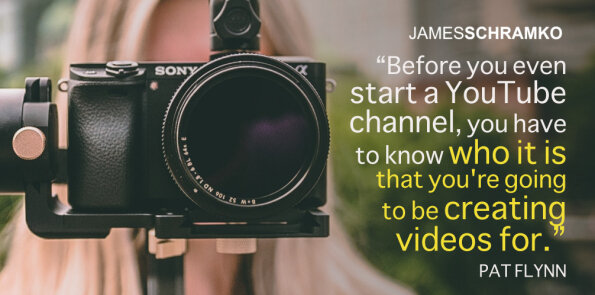
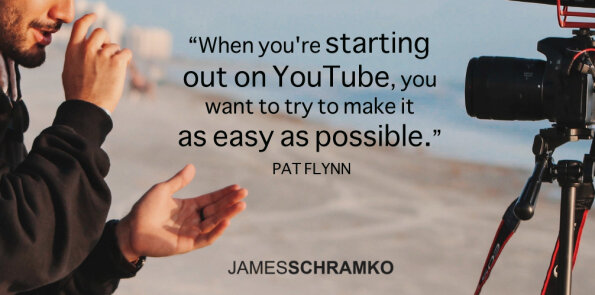

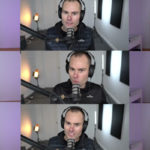

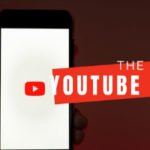





I’m so happy I signed up for this course!
The Welcome video is terrific – and inspired a lot of confidence in Pat and Caleb and the course they designed.
Thank you, James, for always having top-quality guests and pointing us toward the best training (and for offering us that great bonus in support of Pat!!!).